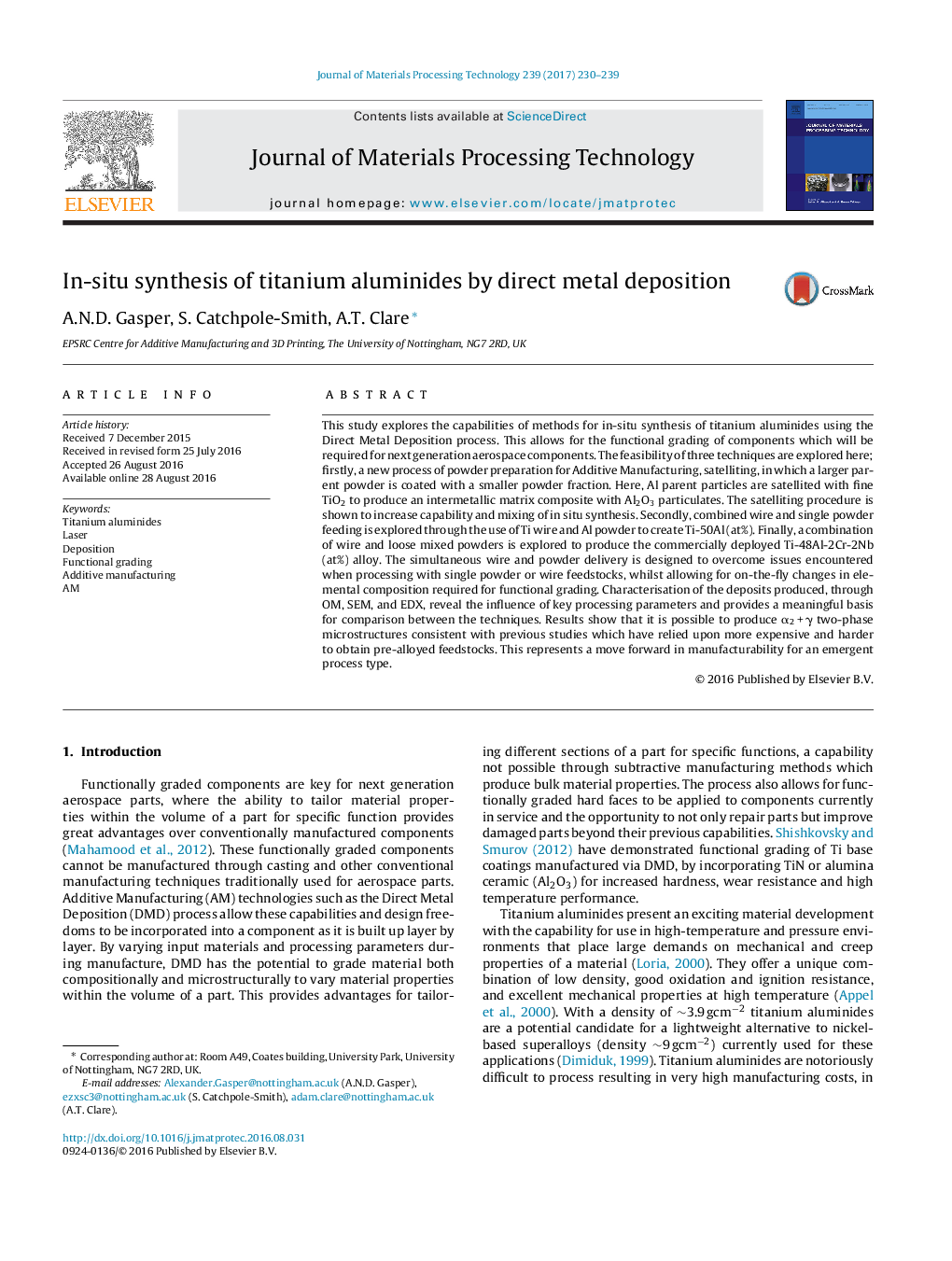| Article ID | Journal | Published Year | Pages | File Type |
|---|---|---|---|---|
| 7176615 | Journal of Materials Processing Technology | 2017 | 10 Pages |
Abstract
This study explores the capabilities of methods for in-situ synthesis of titanium aluminides using the Direct Metal Deposition process. This allows for the functional grading of components which will be required for next generation aerospace components. The feasibility of three techniques are explored here; firstly, a new process of powder preparation for Additive Manufacturing, satelliting, in which a larger parent powder is coated with a smaller powder fraction. Here, Al parent particles are satellited with fine TiO2 to produce an intermetallic matrix composite with Al2O3 particulates. The satelliting procedure is shown to increase capability and mixing of in situ synthesis. Secondly, combined wire and single powder feeding is explored through the use of Ti wire and Al powder to create Ti-50Al (at%). Finally, a combination of wire and loose mixed powders is explored to produce the commercially deployed Ti-48Al-2Cr-2Nb (at%) alloy. The simultaneous wire and powder delivery is designed to overcome issues encountered when processing with single powder or wire feedstocks, whilst allowing for on-the-fly changes in elemental composition required for functional grading. Characterisation of the deposits produced, through OM, SEM, and EDX, reveal the influence of key processing parameters and provides a meaningful basis for comparison between the techniques. Results show that it is possible to produce α2 + γ two-phase microstructures consistent with previous studies which have relied upon more expensive and harder to obtain pre-alloyed feedstocks. This represents a move forward in manufacturability for an emergent process type.
Related Topics
Physical Sciences and Engineering
Engineering
Industrial and Manufacturing Engineering
Authors
A.N.D. Gasper, S. Catchpole-Smith, A.T. Clare,
